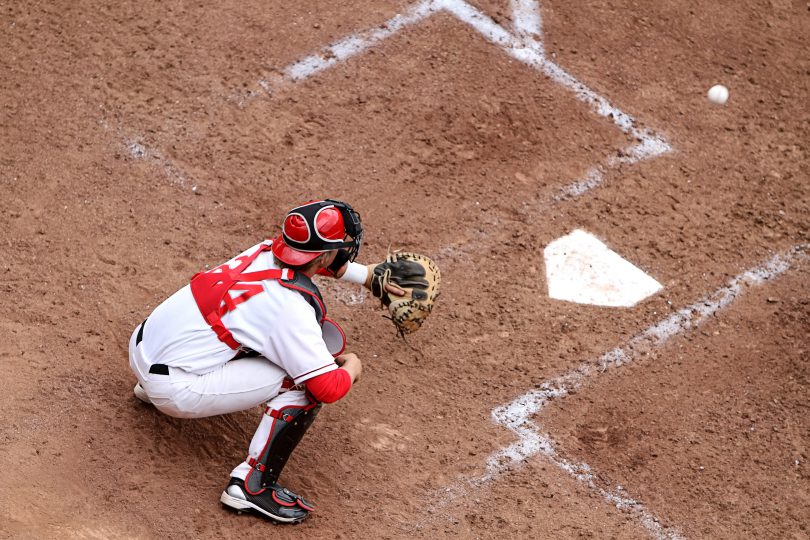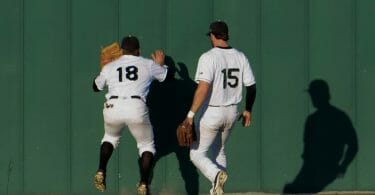The Situation:
It’s been a looong 4th inning. After several pitching changes, numerous pitches in the dirt, several walks, and 6 runs, the catcher has had about enough. It’s one of those innings where nothing seems to go right. When the next pitcher comes in, the score is 8-2 with two outs and runners on 1st and third.
The Play:
The catcher calls for a first pitch fastball and the pitcher comes set. He uncorks a spiked fastball into the dirt. The catcher does his best attempt to block it and wears it right off the forearm. The ball caroms off his forearm, but the block is enough to keep the runner on third despite the runner at first moving up. It’s now 1-0 with runners on second and third. As the catcher crouches to give the sign, he realizes he never talked to the new pitcher about what sign set they are using. He doesn’t care. That last pitch was the last straw for him. He puts down one sign. Fast-forward three pitches and it’s now a 2-2 count. The catcher puts two fingers down, calling for the curveball. Little does he know (or maybe even care), but the runner from second has started to relay pitches. As the pitcher comes set, the runner at second turns his head towards 3rd base, letting the batter know that a breaking pitch is coming. The pitcher delivers the curveball.
The Outcome:
The batter sits on the curveball, which is located well in the lower, outer part of the strike zone. He puts a good swing on it and because he knew it was coming, stays on the pitch well. The ball sizzles into right field on a line, plating two more runs. The inning ends a batter later with the score 10-2. As the game progresses, it turns into a wild contest. Unfortunately, the comeback effort falls short 14-12.
What Went Wrong:
This play has a similar lesson to our Never Play the Scoreboard article. It’s about doing things right 100% of the time, no excuses. We can all sympathize with the catcher. We’ve all seen innings where nothing seems to go right on the mound and the catcher has to wear it over and over. It’s tough, but that’s where the sympathy stops. There is never an excuse for any player to give less than his best effort and in this case, that’s exactly what the catcher did.
When the pitching change was made, the catcher forgot to tell the new pitcher the sign set for when runners reach second. An honest mistake that can be corrected. However, as soon as the runner reached second and the catcher realized his mistake, he made a conscious decision to take the easy route, despite knowing it was wrong. Why? Because at that point, he didn’t think it mattered and didn’t care. He justified his actions with his current misery. Well, as fortune would have it, it did matter and in a big way. Those two runs, which may have been prevented had things been done right, turned out to be the difference.
Although the catcher deserves his share of blame for the mental mistake, he is not alone. The pitcher and middle infielders enable the catcher’s mistake to happen by not calling time and addressing the situation when they realize what is going on. This is a sign of a losing team. If you see mistakes like this being made willingly, it’s your responsibility to put an end to them right away. Otherwise, you are just as responsible for the initial mistake as the player making it. Everyone will be better off if you think the game and do things right, even when it’s more work!







